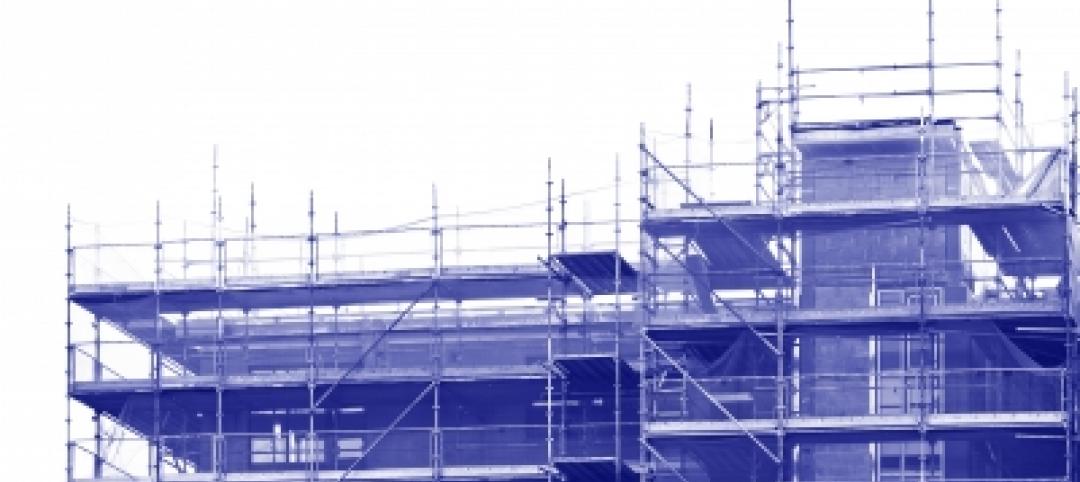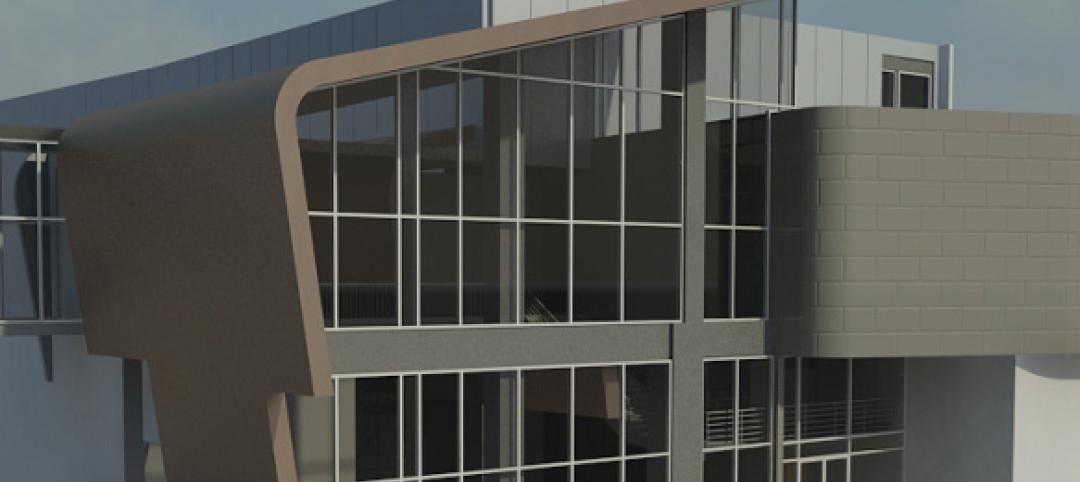A new computational model developed by researchers at MIT takes ambient vibrations and analyzes them to pick out features in the noise to give indications of a building’s stability, MIT News reports. The feedback can then be used to monitor the building for damage or mechanical stress. Think of it as getting your blood pressure or cholesterol checked regularly to find warning signs of future problems before they become too dire.
The model is being tested on the tallest building on the MIT campus, the 21-story Green Building, a research building made of reinforced concrete. The researchers attached 36 accelerometers to selected floors from the building’s foundation to its roof to record vibrations.
But in order for these recordings to actually serve a purpose, the team needed to figure out how to take the data and link it to the health characteristics of the building, according to Oral Buyukozturk, a professor in MIT’s Department of Civil and Environmental Engineering.
Their solution was to create a computer simulation of the Green Building as a finite element model. MIT News describes this type of model as “a numerical simulation that represents a large physical structure, and all its underlying physics, as a collection of smaller, simpler subdivisions.” The researchers then added parameters to the model, such as the strength and density of concrete walls, slabs, beams, and stairs in each floor.
With all of this done, the researchers are able to then add something like the vibration caused by a passing truck to the simulation in order to see how the model predicts the building and its elements would respond. To make the model as accurate as possible, data from the Green Building's accelerometers was mined and analyzed for key features relating to the building’s stiffness and other indicators of health.
The more data that is added over time, the more intelligent the system becomes. The researchers say they are confident that any real life damage in the building will show up in the system.
This type of model will be especially useful to immediately see, after an event such as an earthquake, if and where there is damage to the building.
The researchers’ vision is for a system such as this to be outfitted on all tall buildings, making them intelligent enough to monitor their own health and provide increased resiliency.
Related Stories
| Jun 3, 2011
BIM software helps Michigan college students improve building performance
With Autodesk Revit Architecture, Western Michigan University students model campus buildings for energy analysis, renovations and retrofits
| May 10, 2011
Solar installations on multifamily rooftops aid social change
The Los Angeles Business Council's study on the feasibility of installing solar panels on the city’s multifamily buildings shows there's tremendous rooftop capacity, and that a significant portion of that rooftop capacity comes from buildings in economically depressed neighborhoods. Solar installations could therefore be used to create jobs, lower utility costs, and improve conditions for residents in these neighborhood.
| Mar 10, 2011
Taking ‘PIM’ Beyond E-mail
Newforma enhances its Project Center information management platform with a Revit add-in’ and mobile capability.
| Feb 10, 2011
Medical Data Center Sets High Bar for BIM Design Team
The construction of a new data center becomes a test case for BIM’s ability to enhance project delivery across an entire medical campus.
| Feb 10, 2011
Zero Energy Buildings: When Do They Pay Off in a Hot and Humid Climate?
There’s lots of talk about zero energy as the next big milestone in green building. Realistically, how close are we to this ambitious goal? At this point, the strategies required to get to zero energy are relatively expensive. Only a few buildings, most of them 6,000 sf or less, mostly located in California and similar moderate climates, have hit the mark. What about larger buildings, commercial buildings, more problematic climates? Given the constraints of current technology and the comfort demands of building users, is zero energy a worthwhile investment for buildings in, for example, a warm, humid climate?
| Jan 28, 2011
Firestone Building Products Unveils FirestoneRoof Mobile Web App
Firestone Building Products Company unveiled FirestoneRoof, a first-of-its-kind free mobile web app. The FirestoneRoof mobile web app enables customers to instantly connect with Firestone commercial roofing experts and is designed to make it easier for building owners, facility managers, roofing consultants and others charged with maintaining commercial roofing systems to get the support they need, when they need it.
| Jan 25, 2011
Bloomberg launches NYC Urban Tech Innovation Center
To promote the development and commercialization of green building technologies in New York City, Mayor Michael R. Bloomberg has launched the NYC Urban Technology Innovation Center. This initiative will connect academic institutions conducting underlying research, companies creating the associated products, and building owners who will use those technologies.
| Jan 19, 2011
Large-Scale Concrete Reconstruction Solid Thinking
Driven by both current economic conditions and sustainable building trends, Building Teams are looking more and more to retrofits and reconstruction as the most viable alternative to new construction. In that context, large-scale concrete restoration projects are playing an important role within this growing specialty.













